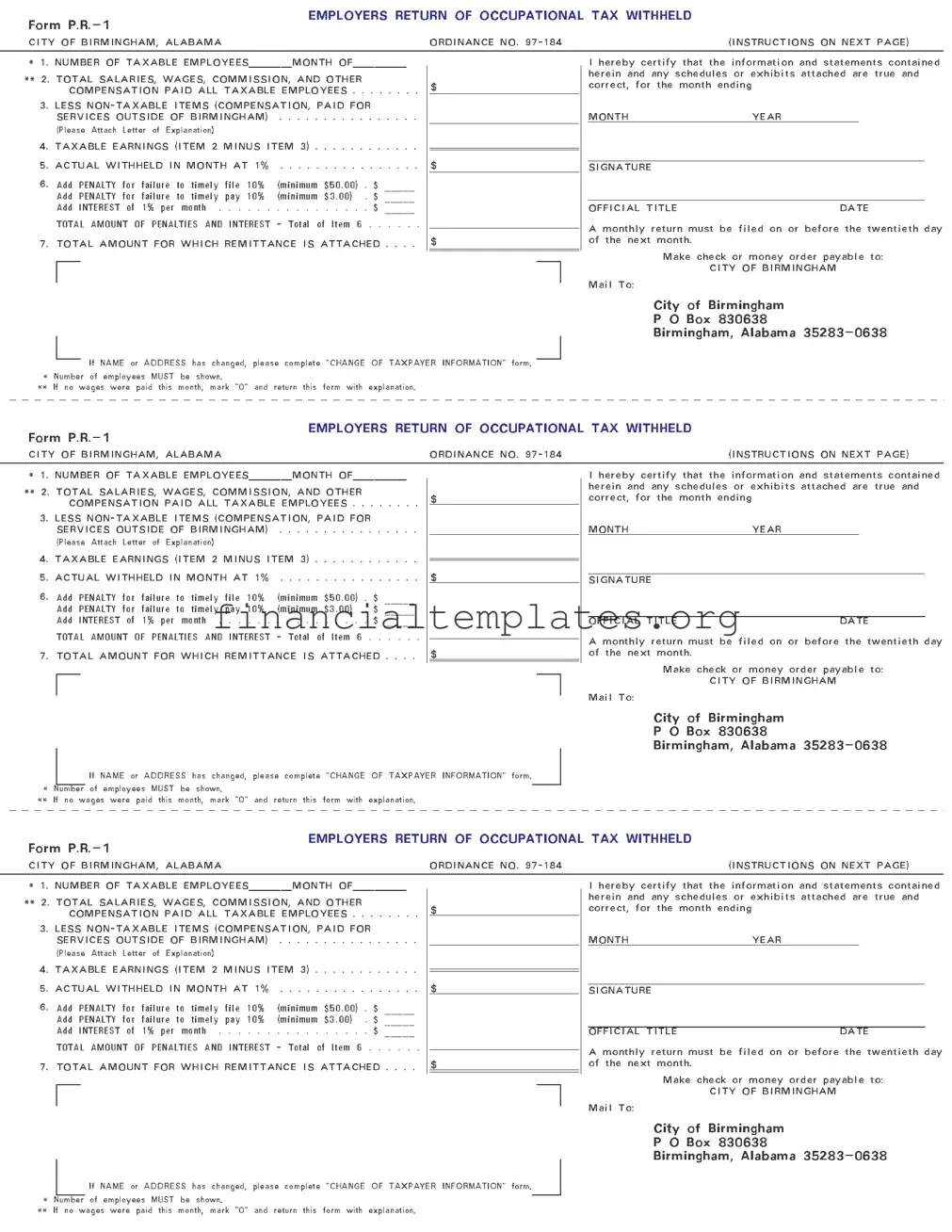The Occupational Tax form, particularly seen in the context of the City of Birmingham, bears similarities to other tax-related documents and forms used in various jurisdictions and for different purposes. One such form is the Federal Income Tax Withholding Form W-4. Like the Occupational Tax form, the W-4 is used by employers to determine the amount of federal income tax to withhold from employees' wages. Both forms require information about the income level and, indirectly or directly, the employee's status that influences the amount of tax withheld. However, while the W-4 focuses on federal income tax, the Occupational Tax form is specific to local occupational taxes.
Another related document is the State Income Tax Withholding Form. Similar to the Occupational Tax form, this state-level equivalent mandates employers to withhold state income tax from their employees' earnings. Both forms are instrumental in ensuring compliance with local and state tax obligations by calculating tax based on wages, salaries, and other compensation. The main difference lies in the jurisdiction: state versus municipal, emphasizing the multi-layered tax obligations employers and employees face.
The Quarterly Federal Tax Return, Form 941, also shares similarities with the Occupational Tax form. This form is used by employers to report income taxes, social security tax, or Medicare tax withheld from employee's paychecks. Both forms play a critical role in the tax collection system, ensuring that taxes withheld from employees' earnings are duly reported and paid to the respective tax authorities on a periodic basis.
The Sales Tax Return is another document that, while differing in its focus on sales rather than income, aligns with the Occupational Tax form in its purpose of collecting taxes for goods and services. Businesses are responsible for calculating the tax owed, similar to how employers calculate tax withholdings for the Occupational Tax. Both forms serve to fund municipal services and infrastructure, illustrating the broader role of tax collection in public finance.
Business License Renewal forms, which businesses must file to maintain active licenses, share a connection with the Occupational Tax form in regulating and funding municipal operations. These forms require businesses to report earnings or other metrics that determine the license fee, akin to how the Occupational Tax form bases tax on employees' compensation. This illustrates the intertwining of tax and regulatory compliance in business operations.
The Unemployment Insurance Tax Filing forms, required by states from employers, are another parallel. These forms calculate contributions based on the wages paid to employees, similar to the Occupational Tax's focus on employees' earnings. The purpose here extends beyond revenue collection to providing a safety net for the unemployed, indicating the multifaceted purposes of various tax and contribution forms employers must manage.
Lastly, the Annual Information Return forms, such as the 1099 or W-2, although primarily informational and at the annual rather than monthly level, relate closely to the Occupational Tax form. They report the total compensation paid to employees or independent contractors over the year, impacting income and other tax calculations. This demonstrates how documentation and reporting requirements across different tax types are interconnected, contributing to a comprehensive taxation system.

